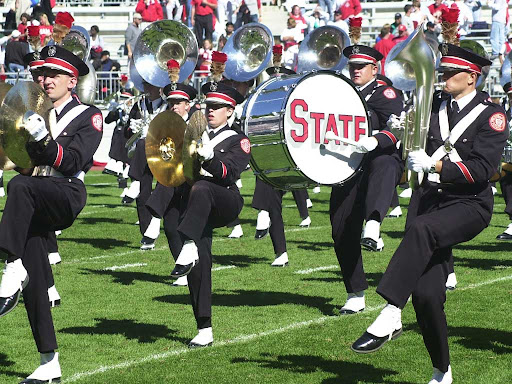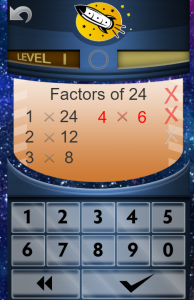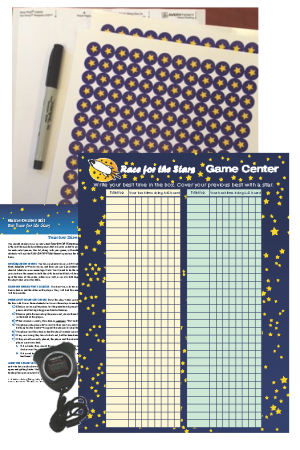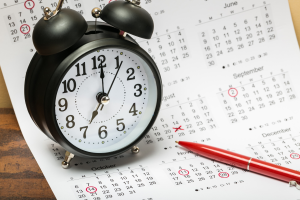The first, and most important objective in elementary math is developing fluency with basic math facts. Practicing basic math facts should be a daily activity throughout the elementary years. All students need to develop fluency with basic single-digit math facts in the four operations. Students who do not develop fluency or ease of answering math facts are handicapped and overwhelmed by the rest of math, as is the girl above. Struggling to answer basic facts distracts students from focusing on higher-order math learning. While developing math fact fluency is not the only important objective, it is the prerequisite for all the rest.
What is fluency practice in math?
Fluency is the ability to do a task quickly and accurately. Fluency in math facts is being able to answer quickly and correctly. The purpose of fluency practice is to develop improved fluency in answering math facts.
Some sources insist that developing strategies for figuring out math facts, such as doubles plus one (see above) is fluency practice. It is not. Such strategies consume time and attention. Students who are using them demonstrate that they are not fluent. To be fluent, students need to use direct recall without the use of any intervening strategy. To be fluent, students must move beyond figuring-it-out strategies to direct recall.
Fluency practice means practice in direct recall of facts. To be effective, fluency practice requires a helper. You need either a person or a computer to give you the answer if you can’t quickly recall it. The helper should give you some extra practice on that specific fact to help you commit it to memory. The picture above illustrates effective fluency practice.
Math Fact Fluency vs. Math Fact Automaticity
Automaticity is the third stage of learning. When a learner first learns a skill, they work to develop accuracy. Accuracy is the ability to do a task correctly. After becoming accurate, the learner can, with still more practice, develop fluency. Fluency is the ability to do a task correctly and do it quickly. After developing fluency, with still more practice, a learner can develop automaticity. Automaticity is the ability to do a task accurately, quickly and without conscious attention or focus.
Members of a marching band must be able to play each musical piece with automaticity, so they can focus on marching in step. Readers must be able to decode with automaticity, so they can focus on the meaning of the passage. Students doing complex math computations must be able to answer math facts with automaticity, so they can focus on the algorithm of solving the problem. After developing fluency, elementary students need to continue to get fluency practice so they can develop automaticity.
Essential Components for Math Fact Fluency Practice to work
The focus of fluency practice should be on developing instant recall of math fact answers. Instant recall comes from committing the answers to memory. Math fact fluency practice must systematically help every student commit all the math facts to memory. If you want practice to help students do that, the practice must have four essential components: (1) bite-sized pieces, (2) corrective feedback, (3) measurement of mastery, (4) gradual, cumulative development, and (5) individual student placement.
(1) Bite-sized pieces
Only a very small number of facts can be committed to memory at one time. Therefore, an essential component of effective fluency practice is to break it into bite-sized pieces. A bite-sized piece is between 3 and 6 facts at a time. Students should only be working on one bite-sized piece at a time, although they should continue to practice pieces they have previously learned. When using flashcards, the term for the bite-sized piece is the working deck which should have only 3 new cards in it.
(2) Corrective feedback
As noted earlier in this article, math fluency practice requires a helper, either a person or a computer. The helper is to provide corrective feedback for whenever the student can’t quickly and easily recall the correct answer. The helper is needed to give the correct answer and then provide some extra practice to help commit the fact to memory. Practice exercises without a helper to give corrective feedback are nearly useless. In flashcards, the helper gives the answer, has the student repeat it a couple of times, and then puts the card back only three spaces so it comes up again, soon before the student forgets.
(3) Measurement of Mastery
Before a student moves on to learn another bite-sized piece, they must have committed this set to memory. They should be able to answer these facts from direct recall, which is essentially instant, less than one second. Fluency practice must assess whether a student can answer the facts in this new bite-sized piece instantly, without hesitation. Practice with this set should continue until the student masters it with all the new facts. When using flashcards, students should be able to read the problem on the flashcard and be able to answer without any hesitation.
(4) Gradual Cumulative Development
These bite-sized pieces must be systematically learned and accumulated so that students come to know all the facts, eventually, in all four operations. Once mastery is achieved with one set, a new bite-sized set can be introduced. However, practice must continue on all the pieces mastered so far. Therefore practice needs to move gradually through all the facts in an operation. When using flashcards, the learned cards are kept in a separate deck and practiced once daily to keep them in memory.
(5) Individual Student Placement
Math fact practice needs to be individualized for each student so they are working only on the facts they are currently trying to commit to memory. It must be structured so they move on to learning new facts only after successfully mastering the last set. They must accumulate the facts they have learned into daily practice. Students must move at their own pace and gradually work their way through all the facts in an operation. When using flashcards, each student needs to have their own deck so they have their own working deck, which includes the new bite-sized set, and their learned deck for review.
Common Misconceptions about Math Fact Fluency Practice
Many activities that are commonly considered to be effective for math fact fluency practice are not, because they lack the essential characteristics needed. They don’t present facts in bite-sized pieces, they don’t give corrective feedback, they don’t accumulate gradually, and they aren’t individualized for each student.
Math games, although often recommended, are seldom effective fluency practice. Games often do not engage all the students at one time. Watching someone do math is not helpful. Games that do not require quick answering are not fluency practice. And of course, few games are structured to help students focus only on the facts they are currently trying to commit to memory.
Math fluency practice that presents all the facts in an operation is unproductive because that’s too many facts to focus on committing a few to memory. Therefore any fluency practice activity that presents all the facts in an operation will not help students develop fluency. This is definitely the case with “mad minutes,” which tests students on all the facts in an operation weekly. Not only is this not helpful, it’s just a mean thing to do to kids.
Practicing math facts without regard to how long it takes the student to come up with the answer is not fluency practice, it’s just practice doing math. Students need extra practice on facts they are trying to commit to memory, which should be few in number. Therefore, worksheet pages that students complete on their own, later to be graded by the teacher for accuracy, are not effective as fluency practice.
Practicing math strategies, like the doubles plus one, are not focused on committing facts to memory and developing direct recall, so they are also not effective fluency practice. Math fluency practice needs to focus students on committing facts to memory so they can answer by recall. Anything other than that will not develop fluency.
Why is Math Fact Fluency Practice Important?
Fluency practice that helps students commit math facts to memory is beneficial. When students can answer from recall, they can do math fast. They enjoy doing it and feel confident in themselves. Once they are fluent in math facts, students can develop automaticity. That is critical so they can concentrate on higher-order math concepts and procedures. Students who must count on their fingers or puzzle through a strategy just to answer 9 plus 7 are not going to do well in math. That struggle for facts distracts them from the lesson, interferes with their ability to follow a procedure, and makes the doing of math assignments a slow and onerous chore. Math fact fluency practice is essential to free students up to enjoy math because they can do it with ease.
Ways to practice math fluency
Practicing math facts for fluency requires a helper to give corrective feedback. Whether using flashcards or orally practicing facts from a worksheet, the student practicing must have someone to give them the correct answer when they cannot recall it. After giving the student the answer, their partner needs to ask again for the answer. In addition, they must get a little bit of extra practice on the fact they couldn’t recall before they forget the correction. Of course, a good computer program can do the same thing.
Probably the best way to practice requires students to state aloud the complete fact and answer. This creates a verbal chain of the fact with the answer in the student’s memory. When using flashcards, it is important to have the student read the flashcard aloud and then answer it. Looking at and saying the answer is also acceptable. Students will look at a problem on computers and answer on a keyboard. Computer-assisted practice like this will also work.
Most importantly, it’s important to carefully select the facts for each student to practice each session. They can’t be randomly selected, but must be sequential. They have to be individualized for each student. The practice set must include only the bite-sized set of new facts along with facts that were mastered previously. Math fact fluency practice must have a sequential structure so that students can gradually develop mastery of all the facts in an operation such as addition or multiplication.
Online math fluency practice
There are lots of online resources that purport to provide math fluency practice. However, very few of them will be effective because very few have the five key components in place. Many provide practice on a large number of facts or randomly selected facts all at once. Without presenting facts in bite-sized pieces, students will have great difficulty in committing the facts to memory. Few provide effective corrective feedback that requires students to remember the answer or give extra practice. Most do not have individual student placement in a sequence to master the facts. Most do not have a method of keeping track of progress, so practice does not result in the gradual development of mastery. A very few programs do measure mastery of small bite-sized pieces and keep track of them, Extra Math and Rocket Math being notable examples.
Math fluency practice online and RocketMath
The Rocket Math Online Tutor is demonstrably effective because it has all five key components in place. The A to Z sets in Rocket Math are bite-sized pieces of four facts each for students to learn. The program gives robust corrective feedback that ensures the student commits the fact to memory. There is a sequence, and each student progresses through it as they demonstrate mastery of each new set and cumulative mastery of the previous sets. In addition, Rocket Math has a strong motivational component because the Rocket Chart helps students see the progress they are making as they complete the A to Z sets. Students enjoy Rocket Math and find it gives them a sense of accomplishment. See for yourself that Rocket Math works on its unique Evidence of Effectiveness page, which shows that students develop increased fluency as they work through the levels of Rocket Math.

















